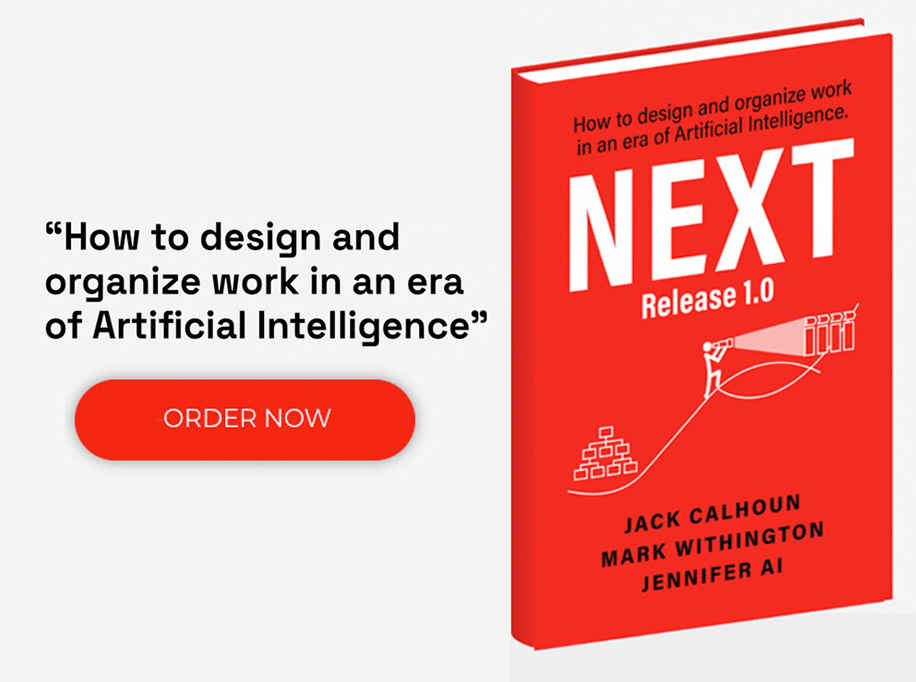As an organization aligns around its digital transformation strategy, it is forced to answer a critical question. ‘How do we maintain and ideally improve our existing business operations while executing our digital transformation strategy?’ Organizations aren’t built to drop everything and ‘transform’ overnight, so the run & improve initiatives that deliver value to customers must remain relevant as an organization transforms digitally for the future.
What is a Digital Transformation Roadmap?
A digital transformation roadmap is the steps a company will take to meet its digital transformation goals. The digital transformation roadmap is the guiding light of the improvement initiatives that strive to transform the company through technology. Here is an important distinction; a digital transformation isn’t simply when an organization improves its current operations with technology. A digital transformation occurs when organizations tap into the potential for better ways of doing things and achieving new results that new technology brings. Systems and processes are entirely transformed, and organizations find themselves better serving themselves and their customers or clients while operating more effectively and efficiently. A digital transformation roadmap uses a detailed analysis of the organization’s internal workings and the external factors influencing it to distill its goals. It then breaks those goals down into actionable steps that can occur alongside the “run” side of the equation. The digital transformation roadmap guides an organization through the chrysalis of change that results in something better and new.
The Importance of a Digital Transformation Roadmap
With the ‘run and improve’ approach, a lot of resources are allotted to the improve side. These resources are an investment to gain the incredible rate of return offered by a successful digital transformation. By creating a detailed digital transformation roadmap, organizations increase their chances of success and recoup their investment. It’s just the same as traveling to an unknown destination; you want to make sure you know where you are going.
As we saw in the last section, a digital transformation roadmap includes a thorough analysis of the organization itself along with outside or external influences. This detailed analysis will create a clearer picture of the organization’s strengths and weaknesses. Information about both of these qualities is crucial because it shows the best areas for growth and where there is more attention needed in order to prevent problems.
That’s why a digital transformation roadmap is essential; it’s about an organization’s survival. If you’re not growing, then what? Survival requires adaptation, and doing what you’ve been doing better—makes your organization more efficient. Having a clearer idea about the threats and opportunities facing your organization increases not just your chances for survival, but to reach greater success. But if you can set your organization up for the process of adapting and creating innovative change, then you increase your success rates dramatically. That’s why walking the steps of a digital transformation roadmap is so important
Two Steps to Creating a Successful Digital Transformation Roadmap
An effective digital transformation roadmap relies on two distinct agendas:
- Agenda one consists of the set of projects and initiatives the organization intends on completing to maintain its business operations. These projects are considered ‘lights on’ initiatives because they are required to continue business operations. Path one is managed by a traditional Project Management Office (PMO) and generally uses a waterfall or agile approach (or some combination) to deliver results.
- Agenda two consists of the set of projects and initiatives that comprise the organization’s digital transformation strategy. While traditional PMO can be effective, organizations should look to other means to manage these projects. Creating a transformation team comprised of SMEs at different levels of the organization to work with senior leaders on executing the transformation agenda provides more opportunity and perspective to tackle the difficult questions that must be addressed.
By building a run & improve agenda and a separate transformation agenda, the organization has created two distinct paths to achieving for the here/now and the future. Once these two agendas are built and deployed, it’s critical that the run & improve agenda does not take priority from a time, resources, or budget perspective over the transformation agenda. Too often, as projects fall behind schedule, there is an urge to revert to what’s known by spending more time thinking about the here/now instead of the future state. By sticking to these two distinct paths, the organization can improve now while it achieves its digital transformation strategy for the future. Wherever you’re at on your digital transformation journey, we here at Accelare are ready and waiting to assist you in any way we can- please reach out to us today!











